By Alain Samson
The field of behavioral economics, and behavioral science more generally, has gained considerable popularity in academia, government and industry over the last 10 years. This is evident in the rise of new scholarly journals and conferences in the behavioral sciences, the success of popular press books, as well as the growing application of behavioral insights in governments and industry, including financial services.
The annual Behavioral Economics Guide, published on behavioraleconomics.com, has been at the forefront of these developments. The Guide seeks to bridge the gap between behavioral science theory and applications. Supported by both industry and universities from around the globe, the publication features introductions authored by renowned behavioral scientists, editorial content on important developments in the field, articles by practitioners working with behavioral insights, as well as resources ranging from an encyclopedia to postgraduate program listings. The publication has been translated into Portuguese, Spanish and French; German and Arabic editions are expected soon.
On the evening of September 13th, 2018, ING and Syntoniq partnered together for the launch of the Behavioral Economics Guide 2018. ING, the event’s main sponsor, has contributed to the Guide since 2017 as part of its mission to empower people to better understand and manage their money, promote behavioral research, as well as support the behavioral economics community. Syntoniq, behavioraleconomics.com’s partner organization, is a fintech startup that productizes behavioral research to help individuals become better financial decision makers.
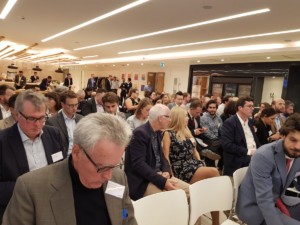
Close to 100 people gathered to hear presentations from four contributors to this and previous year’s Guides. Mark Cliffe, the ING Group’s Chief Economist and Head of Global Research, opened the event with brief welcome remarks, which was followed by an introduction to the Behavioral Economics Guide by its founder and editor, Alain Samson.
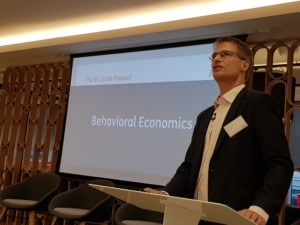
The main part of the evening began with a keynote address by Gerd Gigerenzer, an award-winning author, director of the Harding Center for Risk Literacy at the Max Planck Institute for Human Development in Berlin, and author of the BE Guide 2016’s introduction. Gigerenzer’s primary research interest lies in the study of fast and frugal heuristics – mental shortcuts that can both simplify and aid decision-making. His inspirational talk reminded the behavioral science community of scientific best practices, particularly the importance of testing hypotheses competitively and predicting behavior rather than fitting past data. He also called for a better understanding of the distinction between risk and uncertainty. While mathematical models tend to predict risky outcomes well, simple heuristics may fare better when outcomes are uncertain, as often the case in the realm of finance.
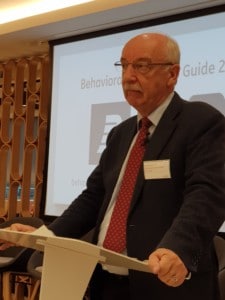
Jessica Exton, a behavioral scientist in ING’s consumer economics team, presented the findings of her research on peer lending, published in the BE Guide 2018 with Laura Straeter. An informal lending market among friends can be used to cover small expenses when there is willingness from both lenders and borrowers, but this willingness is also influenced by norms of social relationships. The ING study shows that consumers are more willing to lend to than borrow from a close friend. Interestingly, this gap widens when requests to borrow or lend are repeated. Individuals become more willing to lend to their friend if asked to do so repeatedly. Borrowers become less likely to request money if they have already done so on multiple occasions in the past. Both lenders’ generosity and borrowers’ discomfort appear to increase.
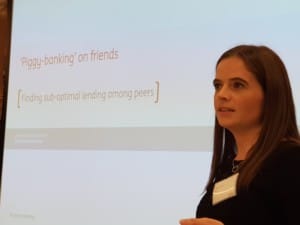
This year’s BE Guide featured an introduction written by Robert Cialdini, author of the best-selling book Influence. Steve Martin, the Director of Influence at Work (UK) and co-author with Robert Cialdini and Noah Goldstein of the New York Times bestseller Yes! 50 Secrets from the Science of Persuasion continued the event with a presentation that demonstrated the power of social proof. Martin outlined the many ways persuasion can be used to influence behavior, citing work he had done to adjust messaging in a wide variety of contexts. His examples included everything from getting people to re-use towels in hotel rooms to influencing choices in take-away restaurants. One of his case studies from public transport in Dublin and Sydney showed that communicating honesty as the norm reduces the prevalence of fare evasion and reinforces morality perceptions of the behavior.
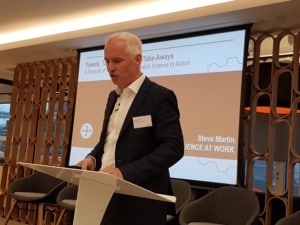
The evening’s final speaker, Decision Technology’s Henry Stott, presented another practically relevant piece of research focusing about the rise of fintechs in the financial services markets. As established banks increasingly have to compete with fintechs, they can mitigate this threat by focusing on a number of areas ranging from customer retention to pricing strategies. The former strategy is particularly relevant from a behavioral perspective, as banks have traditionally benefitted from customers’ status quo bias (reluctance to switch) and may remain competitive by focusing on customer retention. Personal loans were identified as the product traditional banks were most exposed, because customers tend to switch providers of loans more often than for other financial products and people are more willing to take risks when taking out loans compared to saving their money.
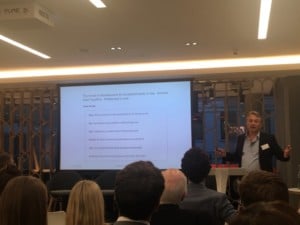
Following a short Q&A and panel discussion, many delegates continued the discussions at venues nearby, evidence of the enthusiasm and engagement of the behavioral science community.
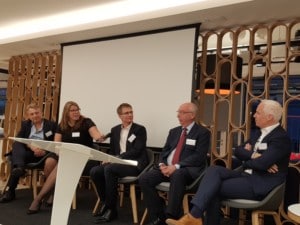
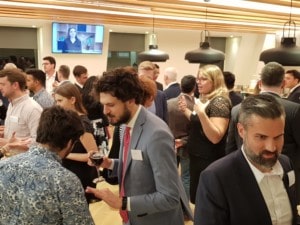
Now in its fifth year, the Behavioral Economics Guide can be download free here. The latest edition features contributions by practitioners from five continents, an introduction by Robert Cialdini, as well as a guest editorial by the economist Robert Metcalfe.


